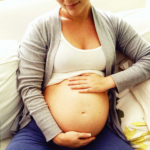Atypical antipsychotic medications are commonly used for the treatment of schizophrenia and bipolar disorder. Despite the increasing use of these medications in women of child-bearing age, there is still relatively little data regarding the reproductive safety of these medications.
Many of the newer antipsychotics, such as olanzapine and clozapine, have been associated with substantial weight gain, hyperlipidemia, and increased insulin resistance. Previous studies addressing the metabolic effects of exposure to these medications during pregnancy have yielded conflicting results. While certain studies have demonstrated lower birth weights among infants exposed to antipsychotic medications, others have observed increased birth weights, particularly among infants exposed to the newer agents. Although there has been speculation that women taking atypical antipsychotic medications may be at increased risk for gestational diabetes, no studies have systematically addressed this question.
In a recent population-based cohort study using the Swedish national health registries, investigators compared maternal and neonatal outcomes in women exposed and not exposed to antipsychotic medications during pregnancy. The study included all women giving birth in Sweden from July 1, 2005, through December 31, 2009. Exposure was defined as filling a prescription for an antipsychotic medication, and women were grouped according to exposure:
Group 1: Women taking olanzapine and/or clozapine (n = 169)
Group 2: Women taking other antipsychotic agents (n = 338)
Group 3: Women taking no antipsychotics (n = 357 696).
Women taking other antipsychotics (group 2) had an increased risk of gestational diabetes (adjusted odds ratio [OR] = 1.77) as compared to women taking no antipsychotic medications. The risk was also increased in women taking olanzapine and/or clozapine (adjusted OR, 1.94), but this was not statistically significant.
Infants exposed to any antipsychotic medication had an increased risk of being small for gestational age (SGA); however, after adjusting for various maternal factors, such as smoking status and BMI, the finding was no longer statistically significant. There was no increased risks of being large for gestational age (LGA) for birth weight or length; however, exposure to olanzapine and/or clozapine was associated with increased head circumference (OR, 3.02). The authors did not speculate on possible causes for this finding but noted that none of the exposed infants had hydrocephalus.
The authors note that one of the most obvious sources of potential confounding is the indication for which the drug is used. This is a particular concern here, as severe mental illness may in itself be associated with adverse pregnancy and neonatal outcomes. Severe psychiatric illness is also as are associated lifestyle and comorbidity factors that may influence outcomes. There were some significant differences between the exposed and non-exposed women. Compared with the total population, those who used antipsychotics during pregnancy were generally older, smoked more often, had a higher BMI, and were more often not living with the father of the child. While the investigators attempted to control for these potential confounding factors, it is possible that there are other, less easily observable, factors which may influence maternal and neonatal outcomes.
Because the data available regarding the use of atypical antipsychotic medications in pregnancy is sparse, there is a great need to study these medications and their use in pregnancy. The National Pregnancy Registry for Atypical Antipsychotics is currently enrolling pregnant patients taking atypical antipsychotic medications to learn more about reproductive safety of these medications.
Interested patients and clinicians may contact the registry by phone at 1-866-961-2388 or by email at registry@womensmentalhealth.org for more information.
Ruta Nonacs, MD PhD
Bodén R, Lundgren M, Brandt L, et al. Antipsychotics During Pregnancy: Relation to Fetal and Maternal Metabolic Effects. Arch Gen Psychiatry. 2012;69(7):715-721.








Leave A Comment